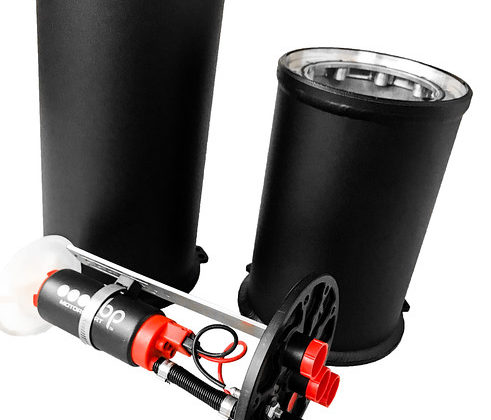,

Flow through this heat exchanger depended on air stacking up at the base of the windshield and a low-pressure zone forming behind the car. It ended up not working very well.
Brian fabricated a more conventional front mount intercooler with nicely shaped end tanks and really short charge pipes for fast response. A water to oil heat exchanger is used for the engine's drysump system, so aero disrupting venting will not be needed for a conventional air to oil cooler. Aerodynamicists hate heat exchangers and would be happy if none were needed!
The engine oil cooler and remote oil filter are mounted to the front structure for easier servicing.

The radiator is mounted lower in the car for CG considerations since it is heavy and full of fluid. With the radiator lower, it can be bled easier and the higher intercooler can have shorter charge pipes. With maximal frontal area exposed to direct airflow, the radiator and intercooler will function better as heat exchangers as well.

Sealing is critical because air leaks greatly reduce heat exchanger efficiency and also reduces the efficiency of the aero. The downforce created by aero is just a few PSI difference in pressures applied over a large area, so plugging any leaks is important.





